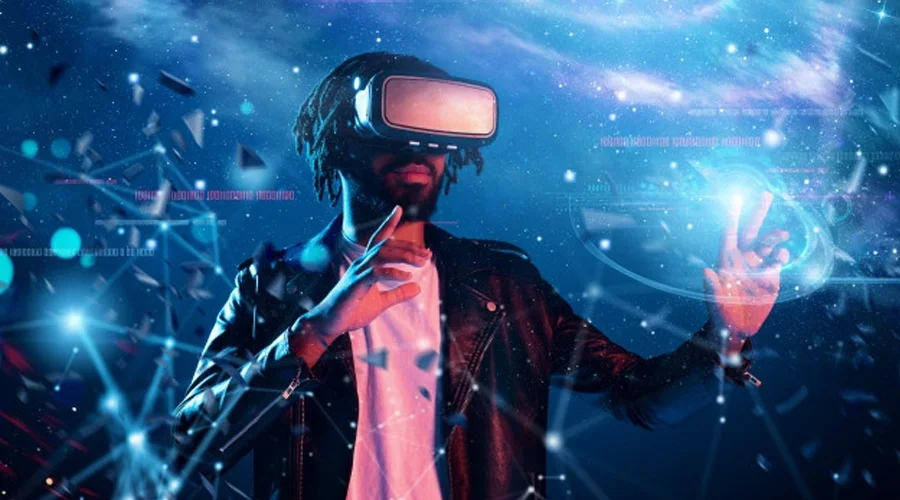
Remember the thrill of LAN parties? A room full of friends, bulky PCs, tangled cables and frantic countdowns before match start. That nostalgia for local multiplayer is evolving. Today, a Metaverse game development company can recreate that energy in AR and VR without the wires. This new form of social gaming feels as intimate as a backyard tournament, yet it exists in shared virtual worlds.
As AR and VR hardware gains traction, developers are building persistent multiplayer spaces where players connect in real time chatting, strategizing, and celebrating wins together. It’s not just about convenience it’s the next step in social gaming evolution.
From LAN Cables to Virtual Cords
Traditional LAN parties were limited by geography. Players had to bring their hardware and meet in person. Now, with AR/VR platforms, you join from anywhere your headset creates a shared space. This switch from physical to spatial networking changes everything. You see your teammates’ avatars, their gestures, and even hear their laughter through spatial audio, just like in real life.
The result? Authentic camaraderie. Modern metaverse game development companies harness real-time communication to replicate the vibe of couch co-op or tournament LAN even when everyone is miles apart.

Why AR/VR Transforms Social Interaction
AR/VR isn't just a flashy fad; they add depth to shared experiences. In VR, you can gesture at someone’s virtual screen or high-five avatars. In AR, your living room can double as a command center. This spatial immersion builds a bond between players that text chat or voice calls simply can’t match.
Furthermore, VR spaces can mimic classic LAN environments, recreation rooms, stadium bleachers, or even spaceship cockpits. These immersive scenes heighten the emotional impact of gameplay, making victory celebrations or defeat feel real.
Technology Behind Seamless Multiplayer
Building these virtual LAN parties involves solid tech. Developers rely on low-latency networking, spatial audio, synchronized game states, and persistent world data all essential for smooth, lag-free experiences. Middleware platforms like Photon, SpatialOS, and Microsoft Azure PlayFab offer flexible backends for AR/VR multiplayer.
Meta and other headset makers provide cross-platform compatibility. With SDKs and performance toolkits, metaverse game development company teams can build scalable, real-time worlds that support 20+ players without hiccups.
Game Types Reborn for AR/VR
Some genres flourish in virtual side-by-side play:
- Co-op Missions: Think escape rooms or heist scenarios with spatial puzzles and voice cues.
- Competitive Arenas: Rounds of paintball, laser tag, or dystopian shootouts all with real-time physicality.
- Creative Camps: Shared art spaces where players build together in mixed reality ideal for children and artists alike.
These experiences are inherently social, drawing groups back together for virtual get-togethers that feel as vivid as in-person events.

Design Considerations for Immersive LAN Worlds
Crafting engaging AR/VR multiplayer games requires attention to UX details. Avatars must move naturally; menus should be gesture-friendly; and shared spaces need visual cues that guide interaction. Feedback is crucial; high-fives should spark haptic responses. Visual indicators help teammates locate each other in VR.
And of course, comfort matters. Developers are introducing comfort settings, teleport locomotion, and seated play options to keep sessions fun even for AR newcomers.
Monetization and Opportunities
Beyond social play, virtual LAN worlds represent commercial potential. Ticketed events, brand-sponsored tournaments, and E-sport qualifiers can all take place in AR/VR environments. You can sell cosmetic avatar items, badges, and voice filters built and managed by your metaverse game development company.
Additionally, co-play experiences can connect to broader metaverse economies. Exclusive tournaments with NFT skins or limited-edition gear enhance longevity and community engagement.
Challenges and Solutions
Despite the potential, creating perfect virtual LAN spaces isn’t easy. Challenges include VR motion sickness, hardware access disparity, maintaining persistent server worlds, and preserving user safety. Proper moderation tools, comfy movement options, and onboarding tutorials help mitigate these issues.
A user-first approach like dedicated accessibility modes or guided tutorials ensures broader adoption, preventing the experience from becoming sensory overload.
Why It Matters for the Future of Gaming
LAN parties taught us more than gameplay; they were social hubs. Recreating that experience digitally fosters connection across distances. As remote living and social fragmentation grow, AR/VR gamified spaces can offer shared moments that matter.
By evolving LAN culture, metaverse game development companies help reignite community-driven play and create new traditions rooted in technology.
Final Thoughts
Game development is shifting from isolated experiences to communal, shared realities. Virtual LAN parties in AR/VR aren’t just games, they're social rituals reinvented for the digital age. Through real-time interaction, spatial immersion, and intuitive design, developers are bringing people together like never before.
And consider the scale: How much is fortnite worth? That iconic title is estimated at over $163 billion in brand value proof that community-driven digital worlds hold immense potential. To capture that magic, your studio needs to think socially: offer immersive, persistent multiplayer spaces. Because the next LAN party might not be in your basement it’ll be in a headset, with friends from around the world.